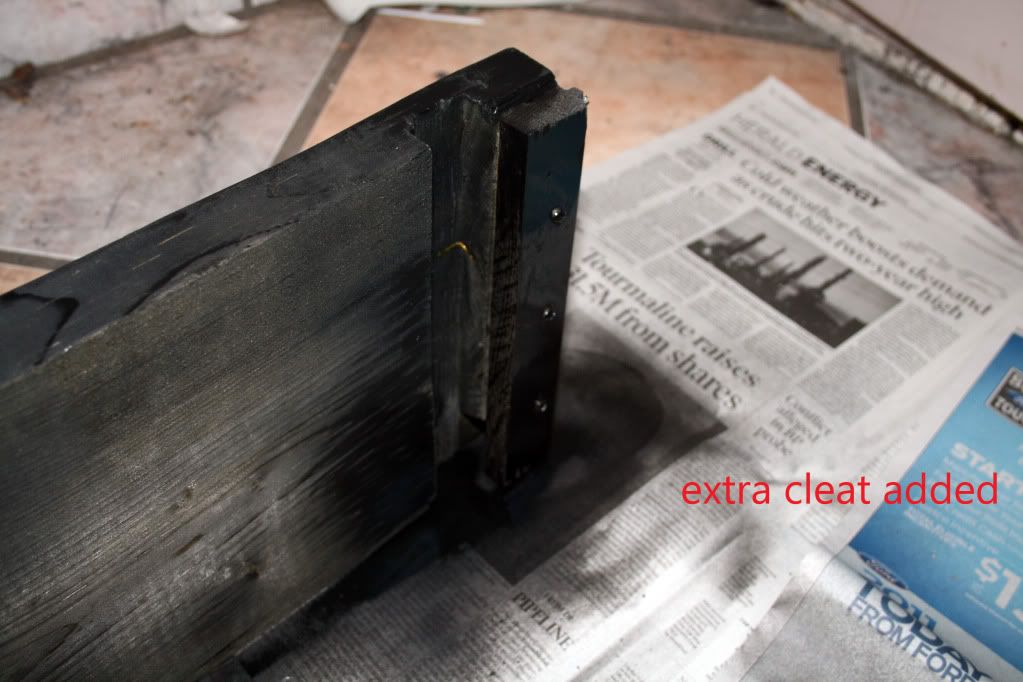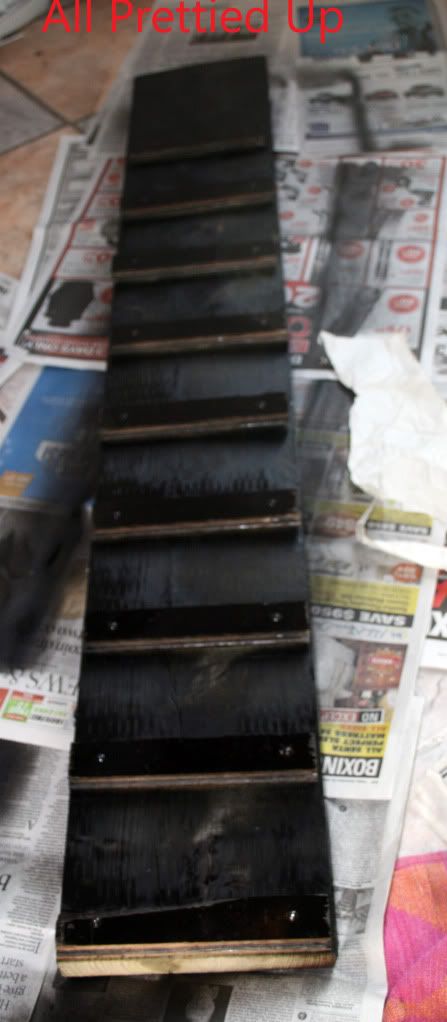K
knee deep in it
Well-known member
climbing up a ramp isn't hard once your track hooks up on the ramp. You can actually stop or idle up the ramp once you have engaged it. The problem is that you need to carry enough speed in order to get the track to the ramp.
If you go to slow, you end up with only the very back of the track on the ground spinning. This is especially true if loading on ice or on pavement. if you go to fast, you end up on America's Funniest Home Videos. I think the fear of loading keeps many people from owning a sled deck.
What is needed is a way for the track to have traction without the need to go too fast. A simple idea is to add something that looks like a ladder to the ramp. Here is my first iteration of the design.
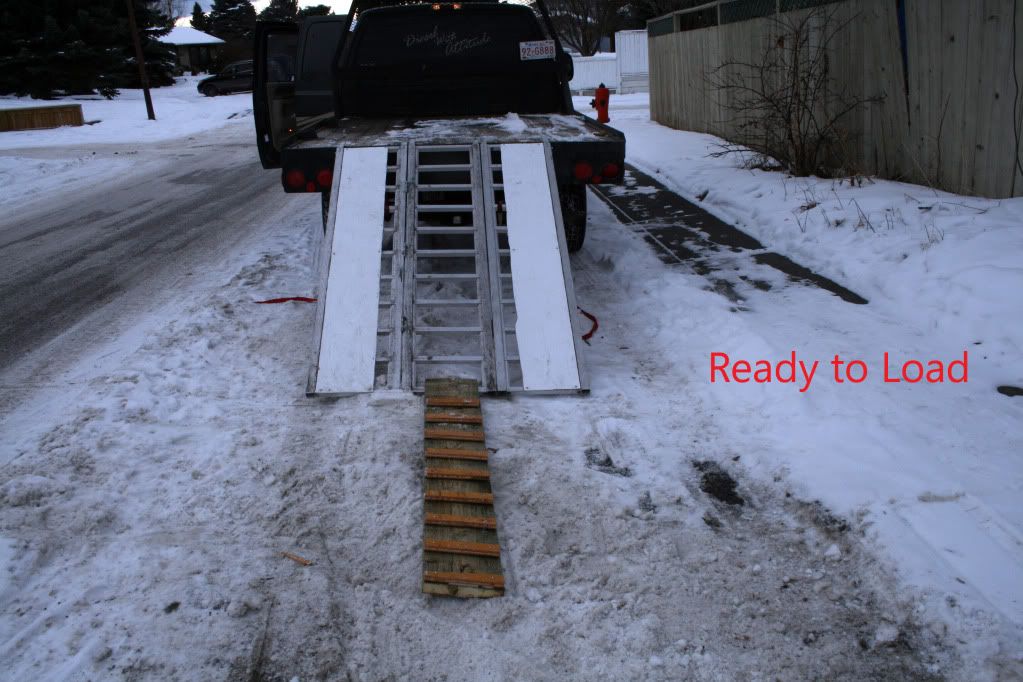
The extension is a 2x10" piece of pressure treated wood with gripping strips attached to the top of it. I used 1 1/2" strips of old hardwood I had glued then screwed every 6"
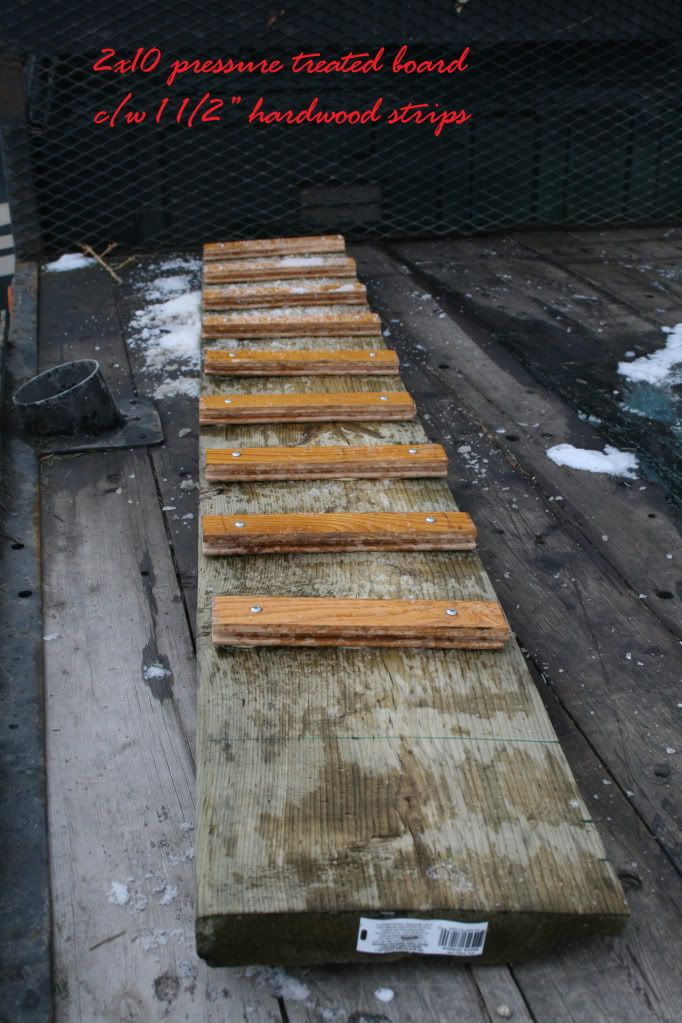
In order to attach it to the ramp so it doesn't get shot out backwards, I cut a 1" slot on the back of the board and it hooks onto the lowest rung of the ramp. Unfortunately, the ground wasn't level and I broke part of it. This part of the design needs some more thought. I may use a strap to help keep it attached to the ramp while loading.
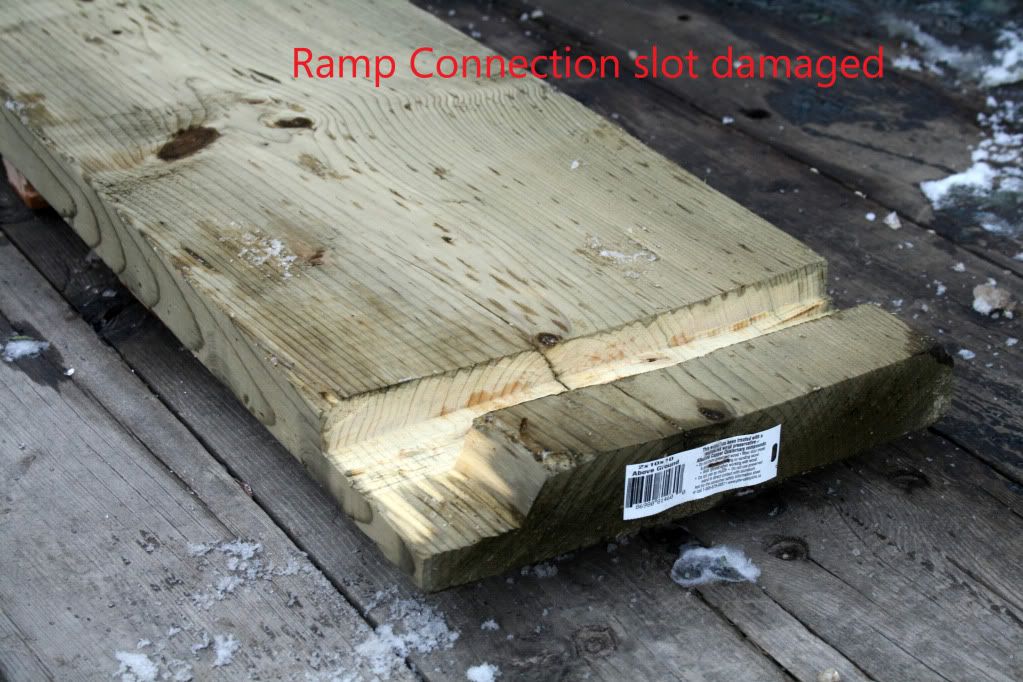
Here is the extension in action. I idled up to the ramp and then idled 1/2 way up the ramp. I then stopped the sled and engaged the parking brake. You can see that the track is fully hooked up to the extension. I then made sure the sled was square to the ramp, started the sled back up and drove on to the deck at 1 mph.
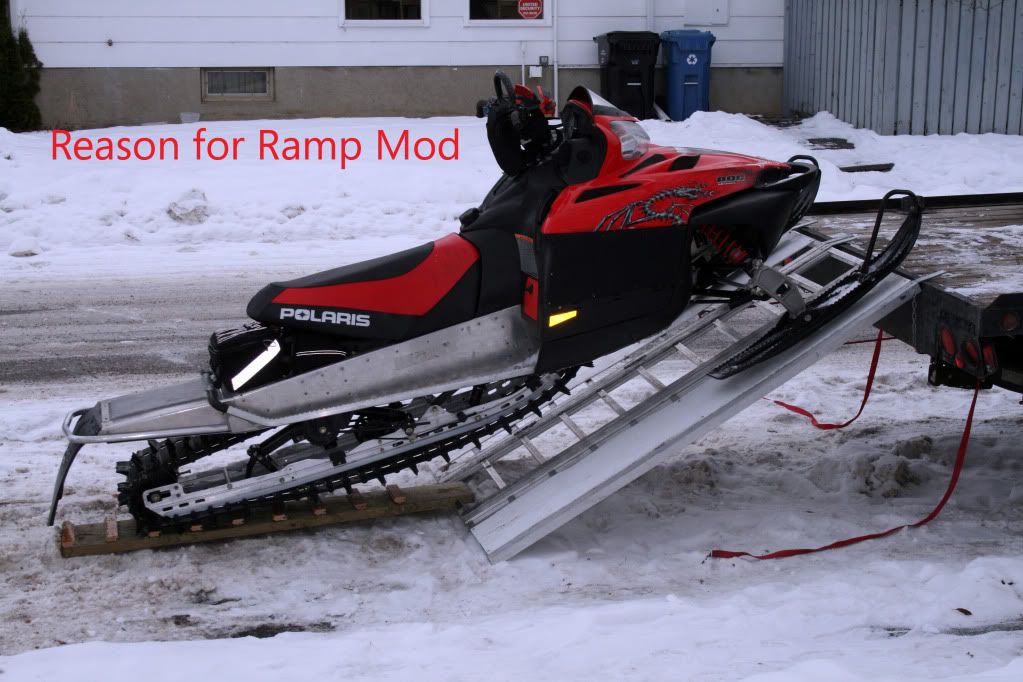
At no point did I exceed a couple of MPH and the track had traction the entire time. I makes loading the sled child's play, very very easy. Time to build was about 1 hour and the cost was $7 for a piece of culled lumber at Home Depot.
Another idea I have is to attach the extension to the 2nd rung of the ramp. This way, it won't matter if the ground is a little uneven as the extension will be mostly off the ground, at a very shallow angle.
This would actually strengthen the connection between the ramp and the extension as the ramp won't be able to jump off the rung.





If you go to slow, you end up with only the very back of the track on the ground spinning. This is especially true if loading on ice or on pavement. if you go to fast, you end up on America's Funniest Home Videos. I think the fear of loading keeps many people from owning a sled deck.
What is needed is a way for the track to have traction without the need to go too fast. A simple idea is to add something that looks like a ladder to the ramp. Here is my first iteration of the design.

The extension is a 2x10" piece of pressure treated wood with gripping strips attached to the top of it. I used 1 1/2" strips of old hardwood I had glued then screwed every 6"

In order to attach it to the ramp so it doesn't get shot out backwards, I cut a 1" slot on the back of the board and it hooks onto the lowest rung of the ramp. Unfortunately, the ground wasn't level and I broke part of it. This part of the design needs some more thought. I may use a strap to help keep it attached to the ramp while loading.

Here is the extension in action. I idled up to the ramp and then idled 1/2 way up the ramp. I then stopped the sled and engaged the parking brake. You can see that the track is fully hooked up to the extension. I then made sure the sled was square to the ramp, started the sled back up and drove on to the deck at 1 mph.

At no point did I exceed a couple of MPH and the track had traction the entire time. I makes loading the sled child's play, very very easy. Time to build was about 1 hour and the cost was $7 for a piece of culled lumber at Home Depot.
Another idea I have is to attach the extension to the 2nd rung of the ramp. This way, it won't matter if the ground is a little uneven as the extension will be mostly off the ground, at a very shallow angle.
This would actually strengthen the connection between the ramp and the extension as the ramp won't be able to jump off the rung.






